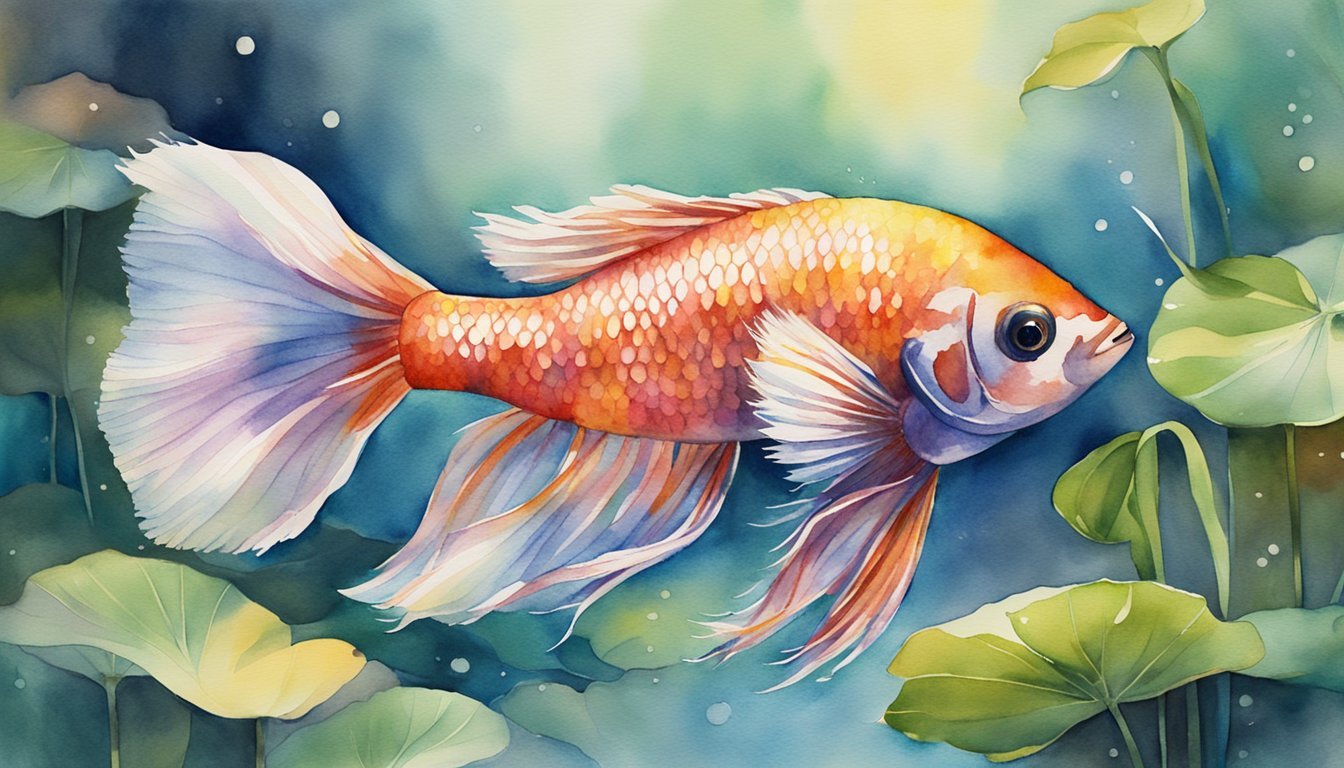Discovering Betta Fish in Their Natural Habitats
Betta fish, often recognized for their vibrant colors and dynamic personality, find their origins in the diverse freshwater areas of Southeast Asia. This section explores the unique environments these fish call home and their intricate biological interactions within those ecosystems.
Habitat and Geographic Distribution
Wild betta fish, including the popular Betta splendens, are indigenous to the warm waters of Southeast Asia. Notably, their range extends across Thailand, Indonesia, Cambodia, Vietnam, Laos, and Malaysia. Habitats vary widely and include:
- Rice paddies
- Shallow streams
- Marshes and ponds
- Slow-moving streams
These aquatic environments provide the warm water conditions and rich biodiversity that bettas require for thriving. The wild relatives of the domesticated Siamese fighting fish are well-adapted to life in oxygen-poor water, thanks to their labyrinth organ which allows them to breathe atmospheric air.
Biology and Ecology
Bettas possess a unique adaptation called the labyrinth organ, enabling them to consume oxygen from the air, an essential trait for surviving in low-oxygen waters. Learn about this distinct feature in Understanding the Labyrinth Organ.
In terms of diet, these fish are not very picky, but they tend to favor insect larvae and other small creatures they encounter in their natural habitat. Wild bettas exhibit a wide array of colors and patterns but usually are more subdued compared to their aquarium-bred counterparts.
The typical wild betta exhibits highly territorial behavior, especially among males. Female bettas, on the other hand, are generally less territorial and can be found in groups. Various betta species like Betta macrostoma, Betta mahachaiensis, Betta imbellis, Betta smaragdina, and Betta persephone, each with their own unique patterns and characteristics, inhabit these regions. Some species like Betta macrostoma are considered rare and endangered, largely due to habitat destruction and the pet trade.
Life in these habitats requires a delicate balance, and fish species, including wild bettas, have developed intricate behaviors and traits to adapt and survive. Understanding these behaviors and traits provides insights into the resilience and beauty of wild betta fish in their complex natural environment.
Betta Fish Health and Care in the Wild

In the natural environment, wild betta fish have adapted to thrive through specific dietary habits, complex reproductive cycles, and facing environmental challenges. Their health and care are a product of their interactions with the ecosystem.
Feeding and Nutrition
Wild betta fish are predominantly insectivores, relying on a diet that includes mosquito larvae, small crustaceans, and worms. They also consume a variety of insects and small invertebrates, typically found on or near the water’s surface, that provide essential nutrients for their well-being.
Reproduction and Life Cycle
The reproduction process among wild bettas is intricate, involving the construction of bubble nests by the males. Bettas, like Betta coccina and Betta pugnax, showcase unique breeding behaviors; the males can become quite aggressive during this time to protect their spawning site. After spawning, males diligently guard the eggs and the resulting fry once hatched.
Environmental Challenges and Conservation
Wild bettas face multiple environmental challenges including competition, disease, predation, and pollution. Conservation efforts are necessary to protect their natural habitat and prevent various wild betta species from becoming endangered. Protection of these spaces ensures bettas remain safe and healthy amidst their complex ecosystems.

